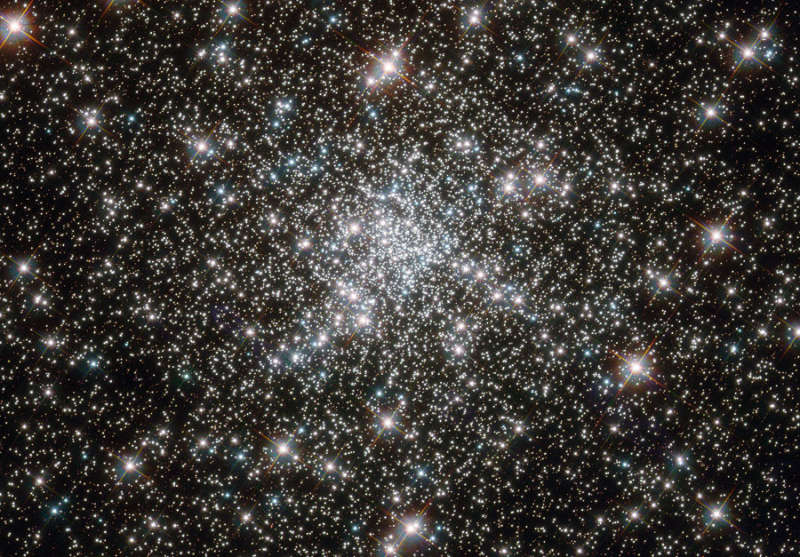Credit & Copyright: ESA/Hubble,
NASA
Explanation:
This sharp Hubble Space Telescope view looks
deep
into NGC 6752.
Some 13,000 light-years away toward the southern constellation Pavo,
the globular star cluster
roams the halo of our Milky Way galaxy.
Over 10 billion years old,
NGC 6752
holds over 100 thousand
stars in a sphere
about 100 light-years in diameter, but the Hubble image
frame spans the central 10 or so light-years and
resolves stars near the
dense
cluster core.
In fact the frame includes some of the cluster's
blue straggler stars,
stars which appear to be too young and massive to exist
in a cluster whose stars are all expected
to be at least twice as old as the Sun.
Explorations
of the NGC 6752 have also indicated that
a remarkable fraction of the stars near the cluster's core,
are multiple star systems,
supporting arguments
that star mergers and collisions in the dense
stellar environment can create the cluster's
blue
straggler stars.
1999 2000 2001 2002 2003 2004 2005 2006 2007 2008 2009 2010 2011 2012 2013 2014 2015 2016 2017 2018 2019 2020 2021 2022 2023 2024 2025 |
Январь Февраль Март Апрель Май Июнь Июль Август Сентябрь Октябрь Ноябрь Декабрь |
NASA Web Site Statements, Warnings, and Disclaimers
NASA Official: Jay Norris. Specific rights apply.
A service of: LHEA at NASA / GSFC
& Michigan Tech. U.
|
Публикации с ключевыми словами:
globular cluster - blue stragglers - Шаровое скопление - голубые бродяги
Публикации со словами: globular cluster - blue stragglers - Шаровое скопление - голубые бродяги | |
См. также:
Все публикации на ту же тему >> | |
